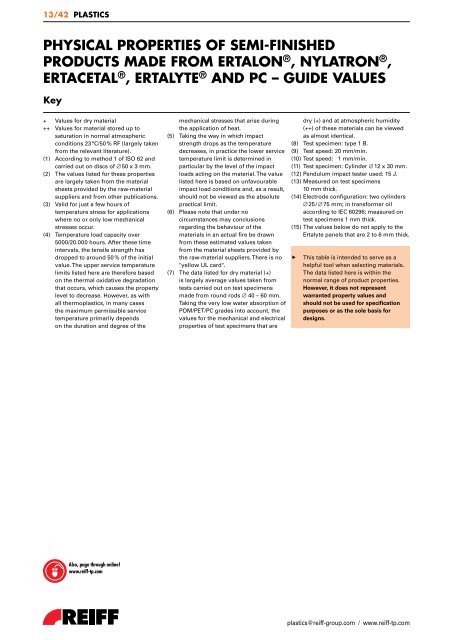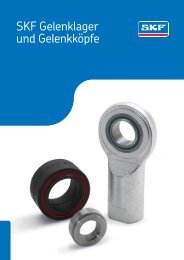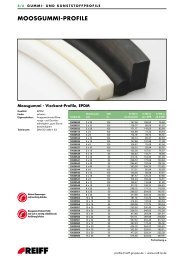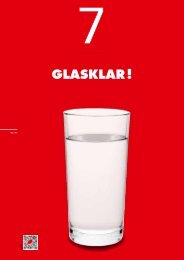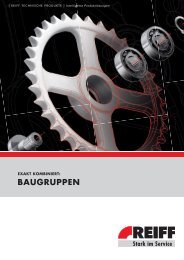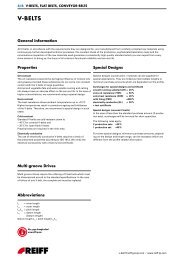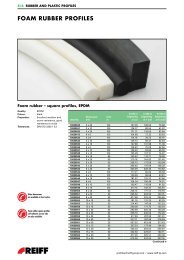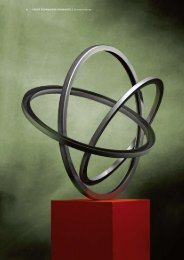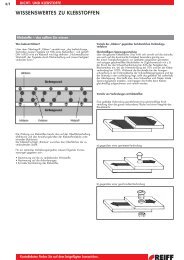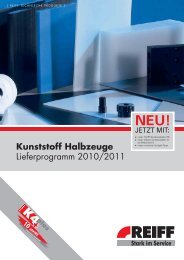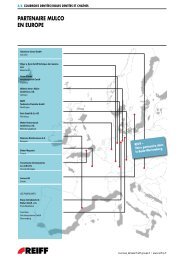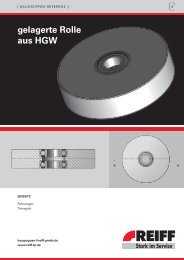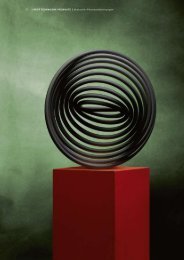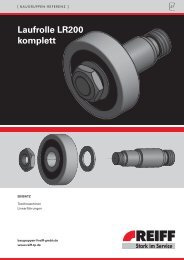REGISTER OVERVIEW PLASTICS
REGISTER OVERVIEW PLASTICS
REGISTER OVERVIEW PLASTICS
Create successful ePaper yourself
Turn your PDF publications into a flip-book with our unique Google optimized e-Paper software.
13/42 <strong>PLASTICS</strong><br />
PHYSICAL PROPERTIES OF SEMI-FINISHED<br />
PRODUCTS MADE FROM ERTALON ® , NYLATRON ® ,<br />
ERTACETAL ® , ERTALYTE ® AND PC – GUIDE VALUES<br />
Key<br />
+ Values for dry material<br />
++ Values for material stored up to<br />
saturation in normal atmospheric<br />
conditions 23 °C/50 % RF (largely taken<br />
from the relevant literature).<br />
(1) According to method 1 of ISO 62 and<br />
carried out on discs of ∅ 50 x 3 mm.<br />
(2) The values listed for these properties<br />
are largely taken from the material<br />
sheets provided by the raw-material<br />
suppliers and from other publications.<br />
(3) Valid for just a few hours of<br />
temperature stress for applications<br />
where no or only low mechanical<br />
stresses occur.<br />
(4) Temperature load capacity over<br />
5000/20.000 hours. After these time<br />
intervals, the tensile strength has<br />
dropped to around 50 % of the initial<br />
value. The upper service temperature<br />
limits listed here are therefore based<br />
on the thermal oxidative degradation<br />
that occurs, which causes the property<br />
level to decrease. However, as with<br />
all thermoplastics, in many cases<br />
the maximum permissible service<br />
temperature primarily depends<br />
on the duration and degree of the<br />
Also, page through online!<br />
www.reiff-tp.com<br />
mechanical stresses that arise during<br />
the application of heat.<br />
(5) Taking the way in which impact<br />
strength drops as the temperature<br />
decreases, in practice the lower service<br />
temperature limit is determined in<br />
particular by the level of the impact<br />
loads acting on the material. The value<br />
listed here is based on unfavourable<br />
impact load conditions and, as a result,<br />
should not be viewed as the absolute<br />
practical limit.<br />
(6) Please note that under no<br />
circumstances may conclusions<br />
regarding the behaviour of the<br />
materials in an actual fire be drawn<br />
from these estimated values taken<br />
from the material sheets provided by<br />
the raw-material suppliers. There is no<br />
"yellow UL card".<br />
(7) The data listed for dry material (+)<br />
is largely average values taken from<br />
tests carried out on test specimens<br />
made from round rods ∅ 40 – 60 mm.<br />
Taking the very low water absorption of<br />
POM/PET/PC grades into account, the<br />
values for the mechanical and electrical<br />
properties of test specimens that are<br />
dry (+) and at atmospheric humidity<br />
(++) of these materials can be viewed<br />
as almost identical.<br />
(8) Test specimen: type 1 B.<br />
(9) Test speed: 20 mm/min.<br />
(10) Test speed: 1 mm/min.<br />
(11) Test specimen: Cylinder ∅ 12 x 30 mm.<br />
(12) Pendulum impact tester used: 15 J.<br />
(13) Measured on test specimens<br />
10 mm thick.<br />
(14) Electrode configuration: two cylinders<br />
∅ 25 / ∅ 75 mm; in transformer oil<br />
according to IEC 60296; measured on<br />
test specimens 1 mm thick.<br />
(15) The values below do not apply to the<br />
Ertalyte panels that are 2 to 6 mm thick.<br />
� This table is intended to serve as a<br />
helpful tool when selecting materials.<br />
The data listed here is within the<br />
normal range of product properties.<br />
However, it does not represent<br />
warranted property values and<br />
should not be used for specification<br />
purposes or as the sole basis for<br />
designs.<br />
plastics@reiff-group.com / www.reiff-tp.com


